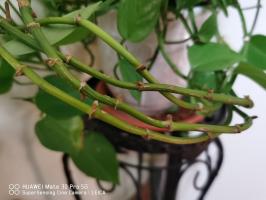Introduction
Potted plants require a certain amount of nutrients to grow and thrive. Fertilization is an important aspect of caring for potted plants. It is important to use the right amount of fertilizer for the specific needs of the plant. In this article, we will discuss how much fertilizer you should use on potted plants to ensure their healthy growth.
The importance of fertilizer for potted plants
Fertilizer contains essential nutrients that potted plants need to grow and develop. These nutrients include nitrogen, phosphorus, and potassium. Without these nutrients, potted plants may suffer from stunted growth, yellowing leaves, and other symptoms of nutrient deficiency. Fertilizing potted plants is especially important because the limited amount of soil in the pot can become depleted of nutrients over time.
The right amount of fertilizer to use
The amount of fertilizer required for your potted plant depends on the type of plant, its size, and the type of fertilizer you are using. Generally, it is recommended to use a balanced fertilizer with an NPK (nitrogen, phosphorus, and potassium) ratio of 10-10-10. This means that the fertilizer contains equal amounts of these three essential nutrients.
For small potted plants, a quarter teaspoon of fertilizer sprinkled on the soil surface every two to four weeks is usually sufficient. For larger potted plants, a half teaspoon to one teaspoon of fertilizer per pot every two to four weeks may be required.
It is important to avoid overfertilization, as this can damage the roots and result in nutrient burn. If you notice the leaves of your potted plant turning brown or black, this may be a sign of overfertilization. In this case, you should water the plant thoroughly to flush out any excess fertilizer from the soil.
Choosing the right fertilizer
There are many different types of fertilizer available, ranging from synthetic to organic. Synthetic fertilizers are made from chemicals and are designed to release nutrients quickly. Organic fertilizers, on the other hand, are made from natural materials and release nutrients slowly over time.
While synthetic fertilizers can provide a quick boost of nutrients, they can also be harmful to the environment if not used properly. Organic fertilizers are a more sustainable choice, but may take longer to see results. Choose a fertilizer that meets the specific needs of your potted plant and compare the NPK ratio on the label to ensure it is appropriate for your plant.
Fertilizing frequency
The frequency of fertilization depends on the specific needs of your potted plant. In general, most potted plants require fertilization every two to four weeks during the growing season (spring and summer) and less frequently during the dormant season (fall and winter).
However, some potted plants may require more frequent fertilization, while others may require less. It is important to observe the plant's growth and monitor its nutrient needs to determine the appropriate fertilizing frequency.
Conclusion
Fertilization is an important aspect of caring for potted plants. Choosing the right fertilizer and using the right amount can help your potted plants grow and thrive. Remember to observe your plant's growth and adjust fertilizing frequency as needed. With proper care and attention, your potted plants can bring joy and beauty to your home for years to come.

 how many times do yo...
how many times do yo... how many planted tre...
how many planted tre... how many pine trees ...
how many pine trees ... how many pecan trees...
how many pecan trees... how many plants comp...
how many plants comp... how many plants can ...
how many plants can ... how many plants and ...
how many plants and ... how many pepper plan...
how many pepper plan...





























